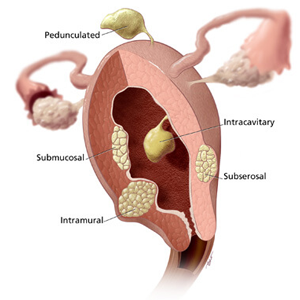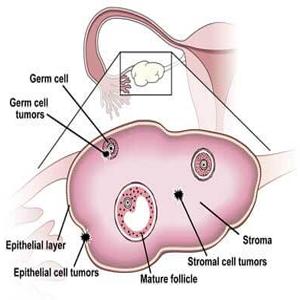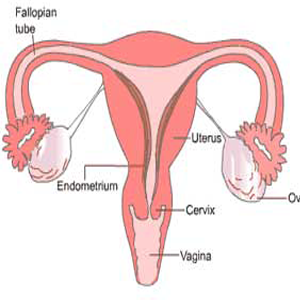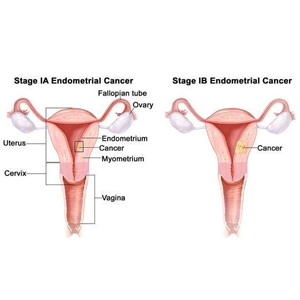Laparoscopy and Hysteroscopy
Laparoscopic Surgeries are designed to overcome the shortcomings of abdominal hysterectomy procedures to better diagnose and treat the patients in most effective way. Laparoscopic surgeries have many benefits over abdominal hysterectomy


Total Laparoscopic Hysterectomy
TLH is one of the important surgery to treat Uterus diseases – fibroids, endometriosis, infection in the ovaries, pelvic pain, overgrowth of the tissue in the lining of the uterus and abnormal vaginal bleeding.
A TLH is defined by the laparoscopic ligation of the ovarian arteries and veins with the removal of the uterus vaginally or abdominally, along with laparoscopic closure of the vaginal cuff. This is in contrast to other methods of removing the uterus, fallopian tubes, and ovaries (Abdominal Hysterectomy).
Visualization of pelvic anatomy and the ability to minimize blood loss is superior with TLH as compared to abdominal hysterectomy (Traditional Open surgery)
Laparoscopic Completion Hysterectomy
It is quite evident that sometimes surgeries do not give the desired results or after surgical procedure over the period of time some complications crop up, this can be the result of improper handling of the diagnose, surgical procedure, infections or after surgery care deficiencies for the patients
Eva’s medical team regularly comes across to such cases wherein patients have already had hysterectomy done or biopsy s/o cancer done but still face critical health issues at time life threatening – our team is equipped and experienced to handle such complications and perform completion surgeries via more radical approach laparoscopically


Laparoscopic Tubal Ligations
Tubal Ligation is the permanent method of birth control for women, in this process fallopian tubes are cut or blocked, which prevents pregnancy by blocking the egg’s path to the sperm and uterus. Our medical team studies the medical and psychological condition of patient and decide about the treatment accordingly
Fertility Enhancing Laparoscopic Surgeries
There are many conditions can contribute to infertility, Uterine abnormalities e.g. fibroids, endometriosis, pelvic adhesions (scar tissue in the pelvis) and uterine anomalies such as a uterine septum and adhesions are few notoriously known for this. Treatment as well as proper diagnose are the key to handle such issues
her coexisting problems at the time of cannulation.


Laparoscopic Wertheim's Hysterectomy
Radical hysterectomy (Wertheim’s hysterectomy) is the removal of the womb and tissue either side of it (parametrium). It is a much bigger and complex surgery than a standard hysterectomy and is normally done in conjunction with a lymphadenectomy. The surgery is performed for some women with cervical cancer although it is also occasionally performed by some surgeons on women with a certain stage of endometrial cancer.
Wertheim’s Hysterectomy involves the removal of the Fallopian tubes, uterus, cervix, ovaries as well as nearby lymph nodes and the upper portion of the vagina. This type of hysterectomy is used in the treatment of gynaecological cancer cases.
Laparoscopic Myomectomy
Laparoscopic Myomectomy is one of the most common surgery to remove fibroids while preserving the uterus. fibroids are very common and 1 in 4 women develop one or more fibroids in their lifetimes, they usually develop in women aged 30-50 years and can sometimes be hereditary.
Myomectomy becomes all the more important for the women who may wish to have children in the future. The type of operation depends on the size, number and position of the fibroids. Recurrence of the fibroid is fairly common after a myomectomy. There is a risk of very heavy bleeding with this operation. Your surgeon should advise you that a hysterectomy may be needed if that situation arose.


Laparoscopic Mgt of Ovarian Pathology
Ovarian Cancer is characterized by abnormal growth of cells in the ovaries causing internal reproduction organs that produce the egg cells in women. There could be many reason for ovarian cancers some of them being inherited genetic mutations, women with history of breast cancer or family history of breast or ovarian cancer, long term exposure of elevated estrogen levels; early age of menstruation (prior to 12 years), late onset of menopause (after age 52), absence of pregnancy (childlessness), and the use of fertility drugs.
Surgical removal of the ovaries is a serious surgery that, in addition to resulting in infertility, will also cause women immediately to go into menopause. This is not a problem in many cases, however, as ovarian cancer usually strikes after menopause.
Laparoscopic Tubal Recanalisation Surgery
Laparoscopic tubal ligation is one of the most common and effective way of birth control but at times patients want to reverse the process – in medical language it is called laparoscopic tubal recanalization surgery. After successful recanalization patients can try for conception from next menstrual cycle. Fertility outcomes are favorable and recommended by Eva
As per our processes we study patient’s case thoroughly, both medical and demographically and we discourage patients under the age of 30 years to go through permanent birth control measures the procedure in laparoscopic terms is called tubal ligation reason being that there is approximately 3% of patients who after few years come to us for reversal process due to changes in their personal life and preferences


Laparoscopic Extra Fascial Hysterectomy
Endometrial carcinoma is predominantly a disease of postmenopausal ladies and is rarely found in young females owing to lesser duration of chronic estrogen exposure (found due to childlessness of Women, obesity, high use of birth control pills, heredity, hyperplasia, radiation exposure).
Younger patients present with clinical challenges as far as treatment options are concerned because with standard surgical treatment there is a risk of developing severe complications which include loss of fertility and surgical menopause.
Extrafascial hysterectomy is the standard definitive treatment option for women with stage IA1 cervical cancers and is sometimes performed following radiation therapy for bulky endocervical carcinomas. The Extrafascial technique permits removal of the intact uterine fundus and cervix, leaving the parametrial soft tissues or a portion of the upper vagina. Extrafascial hysterectomy can be accomplished through an abdominal incision, transvaginally, or by using a combination of laparoscopic and transvaginal techniques.
Laparoscopic Surgery for Prolapse
Female genital prolapse occurs when pelvic floor muscles and ligaments stretch and weaken, providing inadequate support causing the organs to dislocate and portion of the vaginal canal protruding (prolapsing) from the opening of the vagina.
There are many types of prolapse e.g. Cystocele (bladder into vagina), Enterocele (small intestine into vagina), Rectocele (rectum into vagina), Urethrocele (urethra into vagina), Uterine Prolapse (uterus into vagina) and Vaginal vault prolapse (roof of vagina).
Prolapse is normally associated weakening of the muscles during pushing at childbirth, menopause estrogen production by the body is reduced, and leading to further weakening of the vaginal muscles and prolapse is most commonly seen around that time.


Hysteroscopic Tubal Cannulations
ubal Cannulation or fallopian tubal blockage is one of the common of female infertility, one out of every four women who have difficulty getting pregnant have fallopian tube blockage. Hysterscopic tubal cannulation procedure is devised for the treatment of corneal occlusion (or proximal tubal blockage), in this process a tiny wire is placed through the cervix, uterus and in to the tube either under x-ray guidance or via hysteroscope (a small telescope)
Hysterscopic tubal cannulation allows visualization of the entire uterine, cavity, which may be useful in diagnosis and treatment of other coexisting problems at the time of cannulation.
